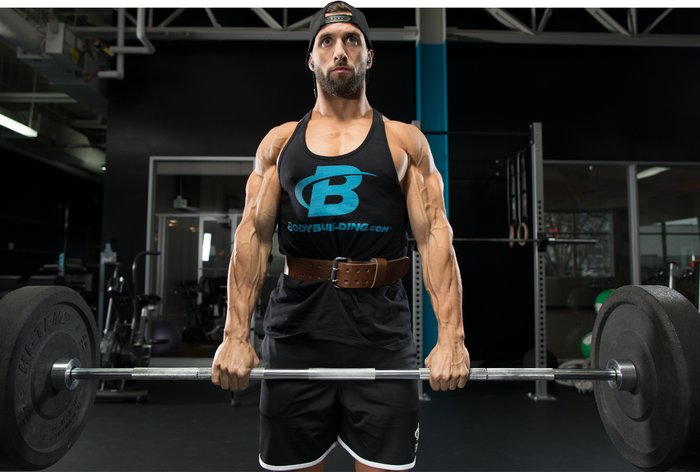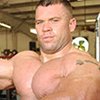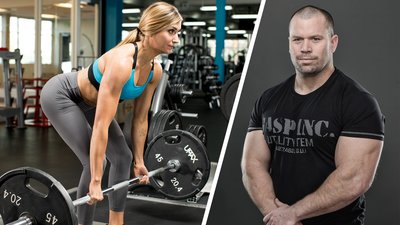Q: I see lot of champion bodybuilders and powerlifters doing touch-and-go deadlifts. What's that about? Is it a technique I should learn?
As King Solomon says in Ecclesiastes, "For everything there is a season, and a time for every matter under heaven." There is a time for touch-and-go deadlifts, too, but you have to know what you're doing.
First, let's be clear. I'm not talking about bounced reps, when you literally bounce the barbell off the floor to gain momentum and make the lift easier. When you do a touch-and-go, you control the weight all the way down, touch the weight to the floor just long enough for the weight to settle, then begin the next rep, maintaining a firm grip on the bar the entire time
Here are four ways you can benefit from using the touch-and-go technique for deadlifts.
Benefit 1: Build More Muscle
Touch-and-go reps consist of three distinct phases. First is the controlled, eccentric phase, as you lower the bar to the floor. Next is the transition phase, when the bar settles briefly on the floor and you prepare to lift. The third is the concentric phase which begins as you lift the bar back up.
Throughout each phase, your body is under tension for much longer than if you were doing standard dead-stop reps, which lack the transition phase. This increased time under tension is a catalyst for muscle growth.
Benefit 2: Get a Tighter Grip
If you do 5 individual deadlift reps, resetting your grip each time, you're not doing nearly as much work as you do during a set of touch-and-go reps. This technique demands that you maintain a solid grip throughout all phases of the lift. A max-effort deadlift for 3 seconds with 600 pounds won't build your grip like a 30-second set of eight 450-pound touch-and-go deadlifts will.
Benefit 3: Build Explosive Power
Beginning in the early 1980s, my mentor, the late Fred Hatfield, Ph.D., a world champion powerlifter, started writing about the benefits of touch-and-go deadlifts. The main benefit he saw was the introduction of the stretch-shortening cycle; that is, the "pre-stretch" that takes place right before an explosive movement such as jumping. This pre-stretch, he believed, allowed lifters to produce more force, faster.
The idea of a pre-stretch relates to deadlifts as well. When you do the first deadlift of a set, you start from a stop and lift what is essentially deadweight. From then on, though, each rep includes an eccentric phase, at the end of which you can spring-load your muscles to produce the force you need to get the weight up off the floor again. For the technically-sound, advanced lifter, repeating this load-and-explode cycle can contribute to a bigger one-rep max and more dead-stop reps.

Benefit 4: Stay Tight
Some lifters lose tightness as they relax and reset at the beginning of each dead-stop deadlift. There is no time for relaxation in a touch-and-go deadlift because the technique forces you to stay tight throughout the entire three-phase movement. Any loss of tightness represents a loss of tension that could otherwise contribute to moving the weight.
To Each Their Own
When Ed Coan, another world champion powerlifter, was prepping to set world records, he used a successive dead-stop-style deadlift, stopping each rep in the starting position, releasing the downward momentum of the weight—but maintaining grip tension throughout. Deadlifting icon Steve Johnson does a brief reset between each dead-stop rep he pulls in training. Benedict Magnusson, owner of the biggest deadlift of all time, does touch-and-go reps. They each used a different technique to train for the powerlift competition one-rep format.
Many advanced lifters use variations on the touch-and-go to derive these four benefits, while beginners must ensure they learn proper deadlift form for technique before going for power. Keep in mind that the training effect you're after should be the driving force behind what type of deadlifts you use .

